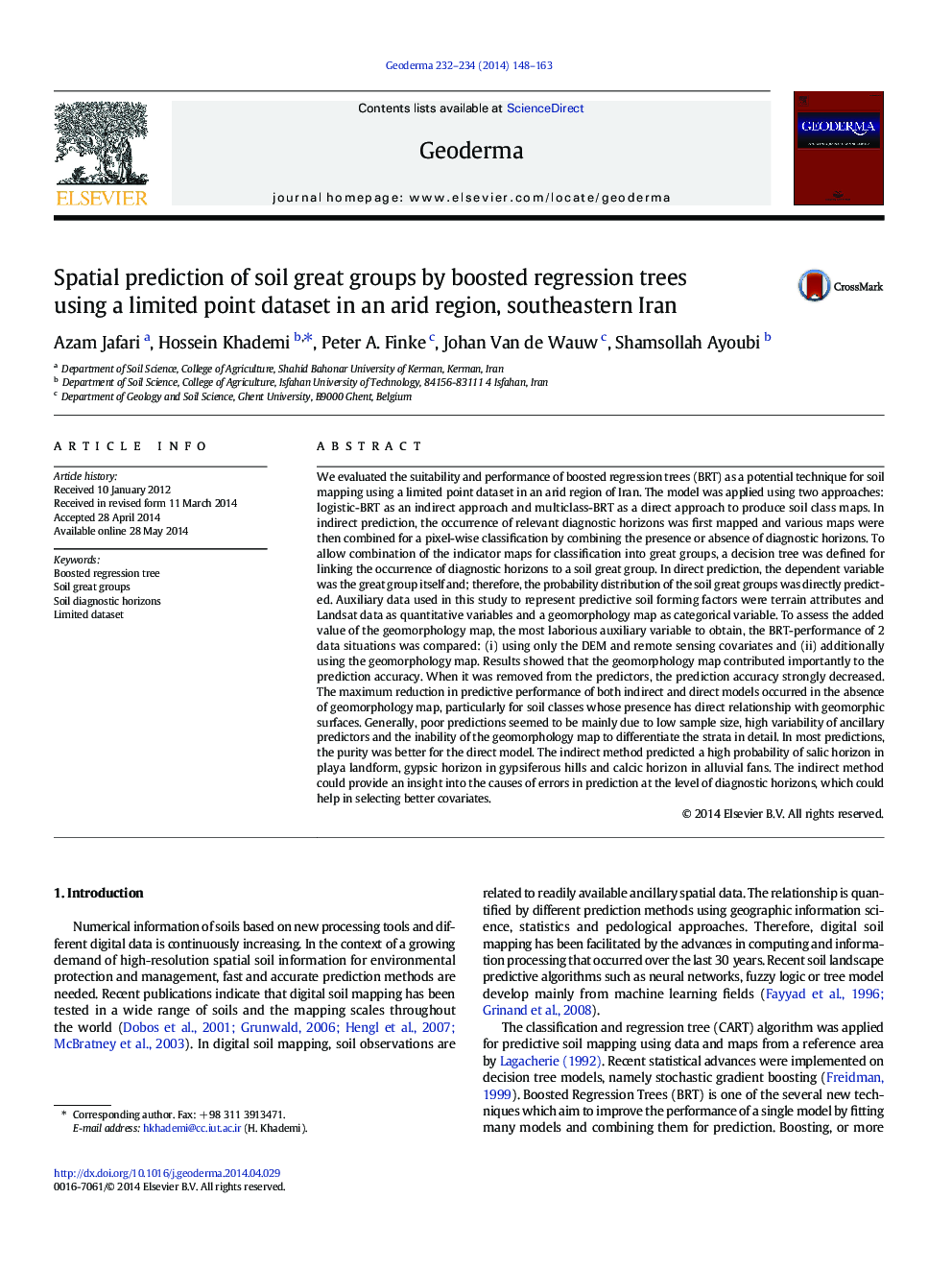| کد مقاله | کد نشریه | سال انتشار | مقاله انگلیسی | نسخه تمام متن |
|---|---|---|---|---|
| 6408709 | 1629469 | 2014 | 16 صفحه PDF | دانلود رایگان |
- Geomorphology map was identified an important tool for digital soil mapping.
- Decision trees could be used to prediction soil types.
- The direct approach better predicted the soil great groups.
- The BRT approach with all covariates showed a better performance.
We evaluated the suitability and performance of boosted regression trees (BRT) as a potential technique for soil mapping using a limited point dataset in an arid region of Iran. The model was applied using two approaches: logistic-BRT as an indirect approach and multiclass-BRT as a direct approach to produce soil class maps. In indirect prediction, the occurrence of relevant diagnostic horizons was first mapped and various maps were then combined for a pixel-wise classification by combining the presence or absence of diagnostic horizons. To allow combination of the indicator maps for classification into great groups, a decision tree was defined for linking the occurrence of diagnostic horizons to a soil great group. In direct prediction, the dependent variable was the great group itself and; therefore, the probability distribution of the soil great groups was directly predicted. Auxiliary data used in this study to represent predictive soil forming factors were terrain attributes and Landsat data as quantitative variables and a geomorphology map as categorical variable. To assess the added value of the geomorphology map, the most laborious auxiliary variable to obtain, the BRT-performance of 2 data situations was compared: (i) using only the DEM and remote sensing covariates and (ii) additionally using the geomorphology map. Results showed that the geomorphology map contributed importantly to the prediction accuracy. When it was removed from the predictors, the prediction accuracy strongly decreased. The maximum reduction in predictive performance of both indirect and direct models occurred in the absence of geomorphology map, particularly for soil classes whose presence has direct relationship with geomorphic surfaces. Generally, poor predictions seemed to be mainly due to low sample size, high variability of ancillary predictors and the inability of the geomorphology map to differentiate the strata in detail. In most predictions, the purity was better for the direct model. The indirect method predicted a high probability of salic horizon in playa landform, gypsic horizon in gypsiferous hills and calcic horizon in alluvial fans. The indirect method could provide an insight into the causes of errors in prediction at the level of diagnostic horizons, which could help in selecting better covariates.
Journal: Geoderma - Volumes 232â234, November 2014, Pages 148-163
